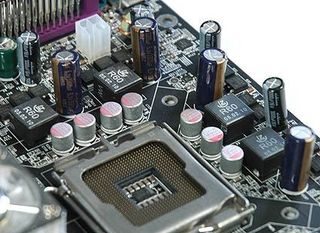Budget And Premium Motherboards At The Crossroads
Feature Discussion
If you compare today's motherboards with the products that were around a couple of years ago, you will notice that several changes have taken place. First of all, users now have a clear choice between the Intel architecture (Celeron and Pentium families) and the offerings from AMD (Sempron, Athlon 64). Though AMD processors and platforms have been around for many years, they had not always been able to keep pace with their Intel counterparts.
The motherboard market itself has changed too. There were times when choosing the right motherboard model and chipset would result in a performance difference of 10% and more when compared to another one running on exactly the same technical specifications. These days you will have to overclock the system or processor, or upgrade your CPU, to receive a comparable performance boost. And if you are interested in 3D graphics, the graphics card is more important than anything else anyway.
Provided that we are talking about mature technology - not components that have only been around for two weeks - the differences between platforms is down to five percent or less for non-graphics system benchmarks. It is mostly similar with processors, because upgrading from a Pentium 4 3.2 GHz to a P4 3.4 GHz will make more of a difference in the user's mind than in real life.
Since performance is not much of an issue any more, motherboard makers have been focusing on hardware and software features in order to have their boards stand out from the crowd. Additional connectivity, higher-class components, overclocking features and numerous little details are intended to win the customer's favor.
Quality Components

The P4N Diamond is equipped with four transistor-based voltage regulators.
Leaking capacitors and poor voltage regulators caused severe problems in the past. Today, most companies are more careful about the electrical components they use, and generally deploy better quality capacitors - Japanese suppliers have a decent reputation - as well as multi-phase voltage regulators. The more MOSFET components are placed in parallel to share the load, the less electrical and thermal strain results. Four phases are considered adequate today; some manufacturers deploy solutions with even more components.
Stay on the Cutting Edge
Join the experts who read Tom's Hardware for the inside track on enthusiast PC tech news — and have for over 25 years. We'll send breaking news and in-depth reviews of CPUs, GPUs, AI, maker hardware and more straight to your inbox.
Current page: Feature Discussion
Prev Page Are Premium Motherboards Worth The Money? Next Page Mass Storage ControllersMost Popular

